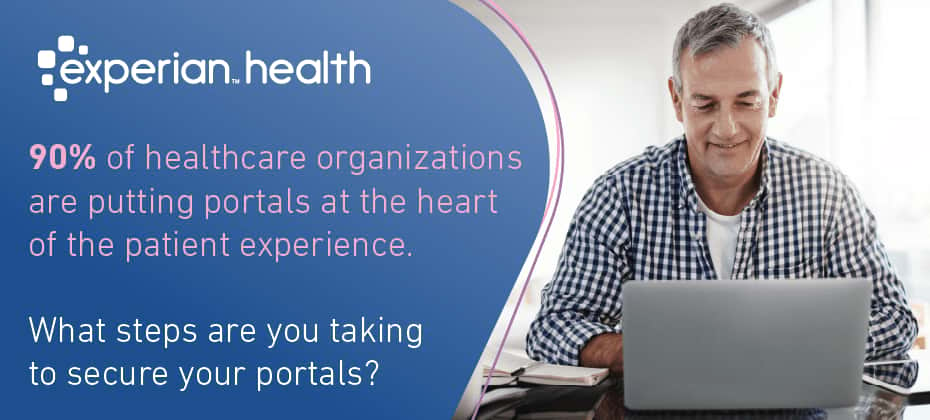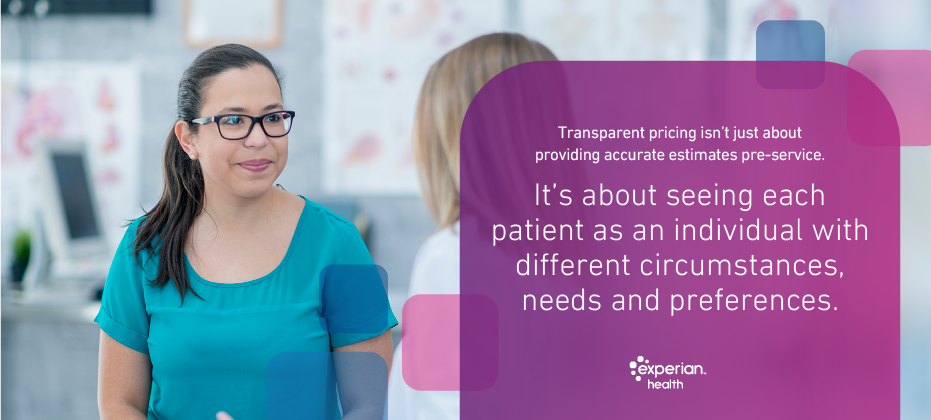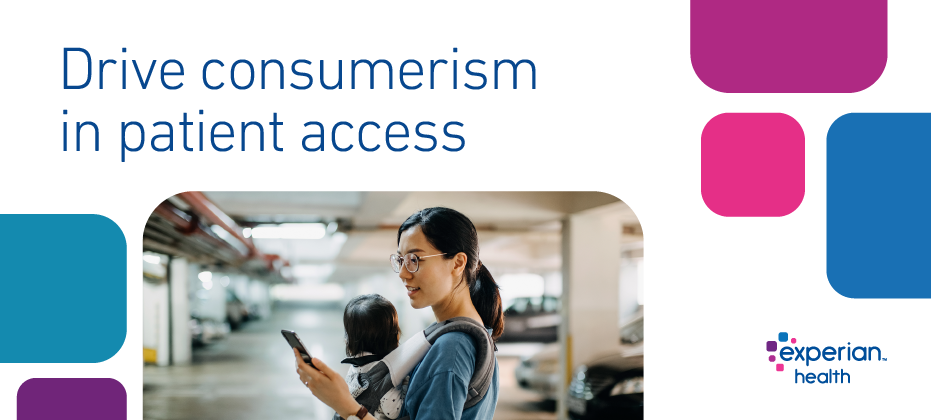Patient Engagement
Arm patients with the tools and secure online self-service portals to settle bills, manage accounts, schedule appointments, pre-register and more.

During this time when the whole world is wrestling with the Covid-19 crisis, planning for the future is difficult. However, there is no question that as the nation emerges from its stay-at-home status, there will be huge release of pent-up demand – especially for healthcare. Health systems have streamlined their operations to deal with the influx of COVID-19 testing and treatments. As a result, any non-emergent care or care unrelated to COVID-19 has been heavily gated, if not canceled entirely. This of course includes preventative care, non-critical regular screenings, and other services related to care gaps. Once the patient flow moves out of crisis mode, these services will certainly resume – and they will resume in earnest. This increased demand for services, coupled with the time lost to meet quality metrics, will place a real burden on member services and quality teams as they work to ensure missed preventative care, screenings, and other care related to care gaps are being sought and coordinated. It is possible to make small moves now to strategically prepare for what’s coming, so that when the crisis subsides organizations can be well positioned to serve their members. Here are a few key things payers can do to get ready: Get your data and strategy in order - Now is the time to use data to better understand your members and fill in any gaps you may have. For example, it is going to be essential to understand geographies and associated provider groups where care gap non-compliance is likely to be highest, so you can strategically focus on those areas. Also, understanding what the best channel of communication is and ensuring that you have accurate contact info for those members is critical. Fundamentally, plans will need data that can help them identify who to target and can supply needed, accurate contact info.Understand your members' SDOH barriers – Understanding your members' social determinants of health (SDOH) barriers will be more important than ever. One of the unfortunate byproducts of this COVID-19 crisis is the economic damage. As a result, there will undoubtedly be critical gaps, like transportation, that will affect your members' ability to access care and thus need to be accounted for. Likewise, with the downturn in the economy, additional social determinants will be on the rise, like food insecurity, housing insecurity, and access to medications. These should also factor into your overall plan – and thankfully there are increasing ways to identify and track SDOH.Implement digital tools now – Ensure your member engagement strategy is fully informed and your teams are ready to efficiently execute. While data can round out any information gaps that may exist for you – contact info, SDOH gaps, etc. – tools that can provide quick, convenient access to services will be needed to take action. For example, enabling your member engagement team with a digital scheduling platform that allows them to book appointments with providers without calling the provider, is a proven way to accelerate member engagement and close gaps in care. This type of digital engagement not only provides an efficiency gain, it also greatly improves the member experience as call times are shorter and members are given greater access to care. In times like this current pandemic it can be hard to think about much else beyond the here and now, and especially hard to picture a brighter future. But prudence would dictate that taking a little time now to prepare can make a big difference when things do start to open back up. Find out more about data driven solutions for member engagement.

Virtual and remote healthcare platforms really haven’t been a flashpoint of consumer demand. Basic portals have been available for a while, owing to the completion of healthcare’s years-long process of converting to electronic health records and regulatory encouragement. “Availability” was not evidence of use, however, and consumers have typically not rushed to register a portal account. That will change in 2020. Now, as most Americans stay home to limit the spread of coronavirus, we’re seeing consumers and providers show much more interest in patient portals and telehealth programs. Thankfully, it has become easier than ever to deliver virtual healthcare. The President’s national emergency declaration removed many barriers to the adoption of patient portals and telehealth, so more patients can access care remotely. In an editorial for the Kansas City Star, CMS Administrator Seema Varma said that as a result of these measures, “all Americans can receive telehealth services in their homes, through their smartphones, for any medically-appropriate purpose. This increased flexibility will allow the healthcare system to prioritize in-person care for those who need it most and minimize unnecessary use of personal protective equipment.” So, how can providers maximize the use of virtual healthcare channels – especially when health services are under increasing pressure? Raising awareness of the role of patient portals in response to Covid-19 Those who might not have engaged with digital life much in the past are now getting used to ordering food online and speaking to family on video and are likely to be more open to the concept of virtual care. Providers like the idea of telehealth and the efficiencies that come with it but are currently more focused on keeping people away from situations that may lead to infection – like a visit to the doctor’s office. That immediate need and consumers’ expanded interest may be the perfect scenario that creates a tipping point for telehealth – both in the immediate weeks and months ahead, as well as on an ongoing basis. Providers must make sure consumers are aware of digital alternatives, however, and be proactive in demonstrating how the patient portal makes their healthcare journey easier and safer. Consumers have no limits to the information they want about Covid-19. Portals are useful in communicating up-to-the-minute news and providing guidance around symptoms, testing and keeping safe from infection. Beyond the care focus, the portal presents patients with a convenient, private and full service means to handle payments, without any staff engagement required. Portals offer a sense of security, too, and – to protect patients from fraud – providers should take a multi-layered approach to protecting the portal, including two-factor patient identity verification, device recognition and extra checks where a log-in request looks suspicious. Positioning patient portals as the future of healthcare The coronavirus crisis stretches material and people resources to their limits. Using technology to gain efficiencies and reduce some of the workload through automation or patient self-help capabilities are critically important; patient portals are playing an increasing role to help manage the tremendous demands being placed on the healthcare system. But, beyond the immediate coronavirus needs, no one really knows what business-as-usual will look like. The Covid-19 response is challenging many deep-rooted norms around how we deliver healthcare. Managing the administrative aspects of health online will very likely become the default. As providers use patient portals to their fullest potential in the short-term, there is a huge opportunity to demonstrate the true value of virtual care – and transform the healthcare industry for the long-term. Find out more about how to optimize your patient portal to help your patients stay safe as they access care during the coronavirus pandemic.

They used to be little more than clunky messaging platforms, but today, patient portals are the key to a frictionless digital healthcare experience. Consumers can check their medical records and test results with a few clicks. They can schedule appointments, pay bills and renew prescriptions whenever they want. Shifting patient information to portals also increases staff productivity and smooths out several sticking points in the revenue cycle. And with improvements in engagement and efficiency leading to better health outcomes, no wonder 90% of healthcare organizations are putting portals at the heart of the patient experience. But these benefits aren’t without risks. Privacy and security are big concerns for consumers and organizations alike. Patients want to feel reassured their data is safe, while providers want to avoid any reputation-killing headlines about data breaches. Identification and authentication can’t be too complicated though, or the patient experience will suffer. The safest strategy is to use a risk-based multi-layered approach, including identity proofing, fraud management, device recognition and even biometrics. Different levels of security checks can be applied, depending on the likelihood of the person being an imposter. If the information being accessed is particularly sensitive, or when the log-in information doesn’t quite add up, your system should trigger additional checks, such as identity proofing questions. But what are the right questions to ask? The right questions balance risk, trust and proportionality There’s no point seeking security information that could be easily guessed, obtained through a quick Google search or stolen from a patient’s wallet. You need questions only the true consumer would be able to answer – “out of wallet” questions, or knowledge-based authentication. This means the traditional “mother’s surname” question would not be a great choice, as it’s easily discoverable by potential fraudsters. Better questions might relate to the consumer’s city of birth, first car model, first pet’s name or previous address. Of course, these identifiers could still be obtained by nefarious parties, but when used in combination with other identity proofing tactics, it’s a significantly reduced risk. The sweet spot lies in the difference between the consumer’s ability to answer correctly and that of a potential fraudster. Your questions should also be relevant to the consumer and appropriate to the context. For example, a common out-of-wallet question used by financial institutions is to confirm a recent transaction. This ticks the box for security, as only the true consumer would likely know the answer, but in the context of a healthcare portal it could seem odd and out of place. It might make the patient wary and actually do more harm than good in terms of building trust. Progressive questioning lets you use smart logic to select a range of appropriate, varied questions, rotated over time and layered up for additional checks when a certain threshold of risk is perceived. In this way, the patient experience will be flexible, seamless and reassuring, without the burden of excessive admin. How Sutter Health System used better questions to increase enrollment and reduce help desk contacts With around 1.8 million patients actively enrolled, Sutter Health System wanted to offer easy access to their self-service portal, but without accidentally giving anyone access to someone else’s information. They had no true identity proofing process for patients, which led to cumbersome checks, errors and high numbers of calls to the help desk. Introducing the PreciseID® identity-proofing tool meant the team could authenticate users more quickly and reliably, using knowledge-based questions without an arduous process. Now, patients have just four or five simple questions to answer, which are checked against a robust dataset. An online risk assessment verifies the patient’s device and determines whether additional checks are required, balancing security with convenience. Tom Mitchell, Applications Manager at Sutter Health System Office describes working in partnership with Experian Health to find the right set of questions: “It took about a month to really hone in on the types of questions and the frequency of questions needed to achieve a level of accuracy that would equate to properly identified patients. You need to select what is important to you and Experian will work with you to make sure you ask the right questions.” Not only has this increased the number of positive patient matches, it’s also reduced the number of people trying to contact the help desk with password issues. Tom says: “We’re always trying to reduce the number of contacts to the help desk. Before integrating with self-service enrollment, patients would have to fill out a paper form or call our contact center, in which case a live person would have to go through some validation processes of our own. It was a fairly cumbersome, long process without this piece of validation.” Find out more about how PreciseID could help you ask the right questions for better portal protection.

COVID-19 is beginning to stress the healthcare system, and typical protocols are being upended. But health systems and medical groups are already rising to the challenge of getting patients tested while, at the same time, prioritizing the protection of their communities and staffs. Below are some solutions being implemented: Online screening Many providers are tapping into online scheduling solutions, responding to the COVID-19 crisis with simple splash pages. Posting questions that screen for symptoms can channel patients seeking testing/treatment for COVID-19 down a specific pathway to get the care they need. Those who need other types of care can still book through the solution, directing them to the right provider and appointment. Screening paths allow access to be prioritized and managed accordingly. Mobile testing Providers are also using mobile test units. These enable providers to administer more tests in a geographically diverse manner, without having to expose their internal clinic and hospital environments to contagion. Patients can simply drive through and receive a test while remaining in their car. Some health systems are combining this with online scheduling, allowing patients to schedule appointment slots for testing. This helps manage the flow of patients, reducing call center volume. Health plans are also modifying Some health plans are taking a similar approach, using mobile testing units and a call center scheduling platform to book testing appointment slots for members. Likewise, they can send a link enabling members to self-schedule for a testing slot via text message or email. This type of proactive member engagement to vulnerable populations is key to reducing the impact on Emergency Departments, while helping diagnose individuals so they can get the care they need. Call center operations Call centers are being overwhelmed with volume – and there is more to come. New methodologies to handle the response are complementing normal operations. Some providers have started to publish a dedicated line for COVID-19 calls that connects to a separate call center pod. Others have quickly added scheduling protocols in the scheduling system to route patients to the right care, or mobile-testing unit, based on responses to the questions agents ask. By automating the Q&A in the platform, patients are guided to the right care, and agents need minimal training to assure accuracy. As the number of COVID-19 cases continues to grow in the U.S., more tactics will be introduced to streamline scheduling, testing and care. Technology will certainly be one key lever for healthcare providers to better serve their communities and keep patients and staff safe.

With Google’s acquisition of Fitbit in November 2019 and Apple’s recent foray into smartphone-based clinical research, the ‘big four’ tech giants are ramping up their efforts to take a slice of the $3.6 trillion healthcare industry pie. These investments aren’t new. Between 2013 and 2017, Apple, Microsoft and Google’s parent company, Alphabet, filed a combined 300 health-related patents, while Amazon has been looking to expand into the pharmacy space since the early 2000s. Historically, it hasn’t been easy for new players to get into the healthcare game. Up to now, tech companies have mostly stayed in their lanes, using their expertise in cloud-based computing, artificial intelligence and supply chain management to break into health markets around the edges. What gives them a big advantage now is the rise of healthcare consumerism, especially in the digital realm. Patients expect to be treated as individuals, with communications and services that are convenient and tailored to their needs. The personalization that so delights them is powered by their own health data and a focus on the consumer experience – two of the tech companies’ biggest strengths. Providing a consumer-centric experience has been challenging for the healthcare industry. In fact, it’s been challenging for many legacy industries (banking, insurance, etc.). Amazon and others have a head start in being able to leverage vast quantities of consumer data and turn insights about their customers’ lifestyles, behaviors and preferences into a better consumer experience. How can healthcare providers compete? Understanding consumer data is key to a better patient experience and better population health The buzz around consumer data opportunities isn’t limited to the tech world. Recognizing the role of consumer data in improving both the patient experience and population health, more health systems are investing heavily in data analytics, looking at how they use data to market to their consumers and address the social determinants of health. Mindy Pankoke, Senior Product Manager for Experian Health, says: “Consumer data is becoming more important in healthcare because patients are people. They're more than a clinical chart or claims form. They have lifestyles, they have interests, they have behaviors. This is called consumer data. ‘Social determinants of health’ has become a huge buzzword in the healthcare industry and it's more than buzz. It's data about people's lifestyles that we can use to improve their health.” Over 80% of health outcomes are attributed to the social determinants of health, so knowing who your patients are and what they need is increasingly important if you want to improve their wellbeing. When you understand what’s going on in your patients’ lives, you’ll know whether they need assistance with transportation, understanding their healthcare information, managing a care plan or accessing healthy food. You can communicate with them in the most effective way and point them towards services that could help them access care and avoid more serious conditions. And even better, much of this can be done through time-saving automation tools. Where to start with consumer data Today’s leading healthcare providers are using consumer data in three main areas: 1. Streamlining patient communications Whether a patient is getting treatment for a broken leg or multiple chronic conditions, their healthcare journey probably involves hundreds of touchpoints with your organization. Consumer data helps you cut to the chase and give them the exact information they need to make their next decision or complete their next task, in the most convenient way. Data analytics allow you to create a slicker patient experience, by giving the right message in the right format – whether that’s in marketing to new patients, sending bill reminders, or encouraging wellness checks. 2. Segmenting patients according to social determinants of health In a study of 78 social needs programs published this month, Health Affairs reported that health systems invested more than $2.5 billion in interventions focused on housing, employment, education, food security, community and transportation, between 2017-2019. Clearly, some patients will benefit from these services, while others won’t. There’s no point giving the same information to every patient. Consumer data lets you segment your patient population and target information about social programs to the ones who need them most. 3. Creating bespoke services for your specific patient population Consumer insights tell you exactly what’s blocking your particular patient population from accessing care, now and in the future. You’ll know how many have difficulty attending appointments, how many might struggle to read complicated instructions and how many will be too busy to download and use your new healthy recipe app. Analyzing your population’s needs and tendencies allows you to predict future demand for different services and develop interventions to solve those specific challenges. Future-proof your consumer data strategy by working with a trusted partner As the big tech companies are coming to discover, healthcare data regulations are complex. You need to know where your data comes from, for the sake of both accuracy and permissibility. Working with a trusted data vendor in the health space can help ensure the reliability and integrity of your data, as they will have expertise in the appropriate use of consumer data in healthcare. They’ll help you pull insights from only the most relevant, current data, so you can build a competitive consumer experience on the strongest foundations. Find out more about how Experian Health’s consumer data analytics can give you a holistic view of your patients and the social determinants that affect their health.

For many patients, unanticipated healthcare bills are up there with car breakdowns and untimely home repairs. No one likes a surprise bill. But when your washing machine is on its last legs, you probably do a bit of shopping around to find the best price for a replacement. Are patients doing the same when it comes to their healthcare provider? This is the idea behind recent industry and legislative moves to improve price transparency in healthcare. Recognizing that surprise billing leaves patients feeling stressed out and anxious, lawmakers are working to find a solution that would end ‘balance billing’, where patients are billed the difference between what providers charge and what insurers will pay. These bills often come as a shock, firstly, because the patient didn’t expect the bill in the first place and secondly, because the complexities associated with healthcare expenses create opacity around the actual cost of care. How transparent pricing builds a better patient experience In theory, an end to balance billing in favor of more transparent pricing should improve the patient financial experience. The hope is it leads to more competition and therefore better choice and quality overall. CMS Administrator, Seema Varma, says: "We want to empower consumers and patients to shop around for their health care and pick the provider that works best for them." However, some believe patients don’t yet think of healthcare providers in the same way as other consumer goods. Larry Levitt, Executive Vice President of Health Policy at the Kaiser Family Foundation says: “Most patients don’t think of healthcare as something you can shop around for, and there’s not much incentive when you don’t foot most of the bill directly.” Still, many healthcare organizations are on board. Giving patients greater clarity through more accurate pricing estimates and proactive communication about who pays what should reduce sticker shock, creating a better patient experience. Patient collections are likely to be a smoother and more cost-effective process, while consumer loyalty will be reinforced. All in, transparent pricing is an increasingly useful strategy to improve revenue alongside patient satisfaction. So, how should providers be using transparent pricing to improve the patient experience? How to use transparent pricing to build a better patient experience 1. Provide proactive pricing info to patients Don’t leave your patients to be surprised. Let them know upfront what the cost of treatment is going to be, including their coverage status, so they can plan ahead with confidence instead of heading into treatment with no clue as to what their final bill will be. Digital platforms can help you make this a seamless experience. A text-to-mobile solution such as Patient Financial Advisor gives patients a personalized and simple-to-read cost estimate prior to their healthcare visit and secure links to their bills so they don’t have to chase your collections team for updates. 2. Create a personalized payment experience Transparent pricing isn’t just about providing accurate estimates pre-service. It’s about seeing each patient as an individual with different circumstances, needs and preferences. A price transparency tool can reveal valuable insights about a patient’s specific situation and propensity to pay. With that, you can tailor the information you give them, the way you communicate and any payment plans you might want to recommend. For example, let’s say a patient is due to have an MRI, which will cost $650 with their high deductible health plan. For many, that’s a lot of money. Imagine how much less stressful the experience could be if you’re able to text them in advance to let them know what they owe and give them flexible payment options to manage the cost. 3. Make it easy for patients to pay One simple way to improve collections is to make the payment process as accessible and frictionless as possible. Patients have come to expect a similar consumer experience to what they’d get with online banking, booking travel or online grocery shopping. With the data-driven technology available today, it’s entirely possible for providers to deliver this. Self-service dashboards and tools are a way for patients to see what various procedures might cost and pay their bills whenever is most convenient. These can let patients apply for charity care, update their insurance details and even schedule appointments, giving them greater financial confidence and control over the process. Find out more about how to set up personalized and compassionate pricing estimates and payment options.

When it comes to value-based care, there’s really just one measure that matters: patient satisfaction. As CMS incentivizes providers to help patients find better care, improve population health and lower healthcare costs, more top health systems are seeing patient engagement as the path to value-over-volume success. Patients are finding themselves footing more of the bill for medical expenses, so elevating the patient experience is essential. If they’re not satisfied, they’ll simply take their dollars elsewhere – not what your CFO wants to hear. Helping patients feel more engaged in their health creates a more satisfactory experience, and in turn, boosts patient loyalty. And what’s more, by giving them opportunity to make informed decisions about their care, you can also reduce preventable admissions, avoid no-shows and fix the revenue leaks in patient collections. It’s beneficial for everyone. Here are four strategies to help you boost patient engagement and create a more consumer-friendly experience in your organization. 4 ways to boost patient engagement 1. Use segmentation and customization The first route to consumer-friendly care is about treating each patient as an individual. With advances in data analytics, it’s now possible to group your patients according to risk (whether that’s risk of a particular disease, exposure to a social determinant of health, or likelihood of non-attendance at follow-up). This allows you to be more targeted in your marketing efforts, provide patients with information that’s more relevant to them, and help each patient move to the next stage of their healthcare journey. Stanford Medical School sees this data transformation as central to its vision of “‘Precision Health’ – a more preventive, predictive, personalized and precise” approach to healthcare. Analytics give you a wealth of insights about the clinical, financial, behavioral and social factors affecting your patients, so you can personalize your patient engagement strategy to each member’s specific preferences and needs. As noted in research undertaken by Frost and Sullivan on behalf of Experian Health: “Analytics help us select patients who will respond to engagement strategies and de-select patients who won’t respond are needed. Not everyone responds to engagement in the same way.” By prioritizing precision marketing, you can create a culture of precision care. 2. Help patients take ownership of their health journey Value-based care is an opportunity to empower patients to be active players in their health. Greater transparency into the billing process, access to healthcare data and consumer-friendly tech can all help patients see what’s happening at each stage of the process. When they’re more informed, they’re more likely to adhere to care plans, turn up to appointments and successfully navigate payments. Your patient portal is a good place to start. Research shows that use of portals enhances patient engagement, satisfaction and health outcomes. Patients can access their records, view test results, schedule appointments at a time that suits and sort out bills with less of the stress. It helps patients ask the right questions and builds a trusting patient-provider relationship. 3. Improve the patient financial experience When two-thirds of Americans are worried about being able to cover unexpected medical bills, any way you can make the payment process more transparent is a big plus. Help your patient navigate the financial side of their healthcare experience with clear, real-time information about their coverage status, estimated co-pay calculations and appropriate payment plans based on their specific circumstances. Putting them at ease will help them meet their financial obligations without leaving a bad taste. In this way, you can build consumer trust and optimize your revenue cycle at the same time. 4. Use SDOH data for proactive outreach Research shows that medical tests and treatments alone are not enough to determine the outcome of a patient’s healthcare journey. We should be paying more attention to the social and economic factors that can get in the way of care. Because when patients struggle to access care, it’s harder for them to follow treatment plans or show up to important follow-up appointments. In a value-based world, tackling social needs is a growing priority for providers seeking to improve population health. When you have a more complete grasp of each patient’s motivations, support networks and personal circumstances, you can create a more efficient patient engagement plan. You’ll avoid wasting resources on patients who aren’t in a position to respond and instead can adopt outreach strategies to help those patients access the care they need. This might include offering alternative payment plans, signposting to logistical support such as childcare or transport, or referring to local community services, such as cooking classes or social clubs. To do this, you need reliable, relevant and accurate consumer data and the capability to draw actionable insights. Experian Health’s unrivaled consumer marketing data can help you better understand your patient population so you can communicate with them and support them in the most effective way. Consumer-friendly care is the new currency in value-based accounting – and the key to positive patient engagement. Find out more about how Experian Health can help your organization lift your patient engagement strategies for greater patient satisfaction, better health outcomes, and a healthier

In today’s fast-evolving healthcare industry, consumer expectations are changing. Individuals are footing an increasing portion of medical bills, so they’re paying closer attention to their healthcare options. And with digital technology enabling choices for everything from where to bank to what to eat (and even who to date!), patients are now expecting a similar consumer-centric experience when it comes to their health. But what exactly are they looking for? Providers should respond to this rising consumerism with two things: convenience and engagement. Many patient tasks are time-consuming, tedious and repetitive. The use of outdated technology draws unfavorable comparisons with the intuitive apps used in other industries. And all too often there’s a one-size-fits-all approach to marketing. The opportunities to improve the patient experience are huge. As the competition for consumer business heats up, providers should look for ways to step up their patient engagement strategies to attract new consumers and inspire loyalty among existing members. Consider how to make it as easy as possible for patients to access the care they need, whether that’s through frictionless scheduling, simplified registration processes or proactive communication about free transportation options. Data-driven technology and automation can help drive improvements in both convenience and engagement. Here, we look specifically at how automation could help you meet changing consumer expectations in the world of patient access. How can automation make patient access more convenient for consumers? Patients hate administrative and financial tasks that take them away from family, friends and other priorities. When looking for an easy, streamlined patient access experience, they might ask: Can I make appointments online? Can I get an out of pocket estimate for my cost of care? And can I price-shop my services? Can I do my pre-registration work before I show up for my appointment? Can I manage my bills and all my health information online? Can I do all of this from my mobile or tablet device at a time when it’s convenient for me? Automation can help you deliver against these expectations and remove stress and hassle from many patient access tasks. By using consumer data and technology to trigger the next stage in the process, you can help patients navigate the complex healthcare system, making registration, billing and payment more convenient. For example, online self-scheduling lets patients plan appointments when it suits them. You’ll increase appointment and referral rates, improve call center efficiency, reduce no-shows and enhance the overall patient experience. Or how about offering patients a one-stop-shop for managing all their healthcare admin, through a digital patient portal? This makes it much quicker and easier for them to get price estimates, set up payment plans, update insurance information and stay on track with appointments and treatment plans. By automating the registration and billing processes, you’ll improve self-pay collections and decrease bad debt. If you can say “yes” to the above questions, you’ll be making life easier for your patient access staff too. Reliance on manual data entry processes means staff are constantly battling bottlenecks and dealing with avoidable errors and duplicate records. Not only does this waste employee time, it opens the door to major safety issues and lost revenue: patient identification errors can cost up to $2,000 per patient and are associated with a third of denied claims, costing the average hospital $1.5 million each year. How can automation support better patient engagement? This isn’t just about removing obstacles or introducing speedy tools. You can use automation to improve patient engagement at various touchpoints during the patient access process. Consumer data paired with automation can help you nudge patients by text or email to make appointments, so they don’t miss out on important checks. You can deliver personalized updates, reminders and offers, so your patients feel taken care of and know exactly what’s happening throughout their healthcare journey. Using lifestyle, demographic, psychographic, and behavioral data from the highest quality sources, you can also use automation to segment your audience into groups based on all sorts of variables, in order to communicate with them about the right services, at the right time. Now is the time to leverage technology for a better patient access experience. It’s clear that awareness of the potential ROI in automation is growing. Still, many providers have only scratched the surface when it comes to integrating automation within their revenue cycle operations. Given that 66% of patients would switch providers for more convenient access, it makes sense to consider how you can leverage technology to simplify all sorts of patient tasks, from pre-registration to payments. Learn more about how automation could help your organization create a better patient access experience for consumers.

Healthcare consumerism is on the rise. Your patients no longer see themselves as passive participants in their healthcare journey—they’re active consumers, who have come to expect the same frictionless experience they might find in other industries. They have options. If they’re dissatisfied with their experience, they can go back to the menu of providers and choose something different. But when patients feel supported and respected through their healthcare journey, they’ll remain loyal to your organization, even becoming brand ambassadors. Following the Medical Group Management Association’s (MGMA’s) Annual Meeting in New Orleans a few weeks ago, it became clear that nurturing patient loyalty remains at the top of the list for medical groups looking to stay competitive in an increasingly consumer-driven market. For providers wanting to create an outstanding patient experience (and encourage greater patient loyalty), a good place to start is improving access to care. Win patients’ hearts and minds before they’ve even set foot in your facility. The goal should be to leverage advances in digital technology to make it as easy as possible for patients to find physicians, access schedules, book appointments and take control of their health. Improving patient access through digital care coordination Medical groups should look at how they are using data and digital technology to improve the patient experience in three key areas: Scheduling Laying the groundwork for a positive patient experience starts with making sure the appointment process is as painless as possible. Imagine a mother is woken during the night by her sick infant. Using a traditional scheduling model, she’d have to wait until the next day to call and schedule an appointment with the pediatrician. But if she could schedule an appointment there and then through the pediatrician’s website, this would not only be more convenient and reassuring for her, it would reduce operational strain on the medical practice, who would have fewer calls to handle. Online self-scheduling is the most convenient way for patients to both find a physician or specialist and access care, all on their own terms. By implementing online scheduling, medical groups will see higher rates of patient satisfaction and engagement and an increase in patient acquisition and retention. Care referrals The referral process is another common pain point for patients. For such a crucial process, it’s surprisingly consumer-unfriendly. Patients struggle to connect with recommended specialists and when they do, they often can’t get an appointment for weeks. Many organizations don’t realize how much revenue they could be losing when frustrated patients look elsewhere for care. With a more sophisticated referral process, providers can transform the discharge experience and ensure patients get the follow-up appointments they need—within the same network. One health system in the south east has generated tens of millions of dollars simply by booking follow-up appointments before patients even leave the facility, so they’re less likely to be lost to out-of-network referrals. Decision support Most providers have scheduling rules that determine which patients their clinicians should see and when. What they don’t always have is a way to automate the process so that patients can book online or seek a referral, while still following these scheduling criteria. The provider needs to be confident that if a patient with knee pain wants to book an appointment with an orthopedic specialist, they need to be sure they don’t inadvertently choose someone who specializes in shoulder injuries or pediatrics. The problem isn’t solved by booking by phone. Securing referrals through a call center can be a cumbersome process, eroding patient trust and contributing to scheduling bottlenecks and staff dissatisfaction. But when scheduling is digitized, providers no longer have to worry about these challenges. Automating decision-making creates a simpler process for everyone and most importantly, ensures the patient connects with the right specialist in the least amount of time. How analytics can help you create a consumer-centric organization For leaders considering how to create a more consumer-centric health system, re-imagining patient access should be a top priority. A tool such as Patient Schedule gives your patients a convenient and simple way to manage their appointments and follow-up, so they see the right clinician at the right time, without any of the usual hassle that comes with the scheduling process. On the flipside, automating your patient access protocols also gives your team the intel required to increase capacity to see patients and boost revenue through better acquisition and retention. You’ll be able to track how many patient visits turn into booked appointments, identify the points at which patients drop out of the process and spot bottlenecks in your scheduling. These insights could reveal endless opportunities to make simple tweaks that will give both patients and staff a smoother ride through patient access. Data analytics mean you no longer need to be operating blind when it comes to unblocking the bottlenecks in patient access. You’ll know exactly where to focus your efforts to improve the experience for your patients and grow your competitive advantage at the same time.
